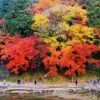Important Ceremonies and Festivals in the Imperial Court of China

The imperial court of China, with its rich history and intricate traditions, has always been a symbol of authority, culture, and ceremonial grandeur. Throughout China’s dynastic history, various ceremonies and festivals were deeply embedded in the workings of the court. These events played a central role in the life of the imperial family, the nobility, and the common people. They were not only expressions of royal power and cultural sophistication but also mechanisms through which the emperor affirmed his divine right to rule and his connection to the cosmos, the ancestors, and the people.
This article explores the significance of several key ceremonies and festivals that were celebrated in the imperial court of China. From royal sacrifices to the honoring of ancestors, from grand court banquets to major state holidays, these events not only showcased the emperor’s authority but also helped cultivate the distinct cultural identity of the empire. Moreover, many of these traditions have persisted into modern Chinese culture, enriching both historical knowledge and contemporary practices.
1. The Role of Rituals in the Imperial Court
In ancient China, rituals and ceremonies were integral to the governance of the state. The emperor, considered the Son of Heaven, had the unique responsibility of performing rituals that connected the human world with the divine. These rites were deeply rooted in Confucian principles, which emphasized respect for ancestors, nature, and social order. The court, as the seat of imperial power, became the focal point for these rituals.
The primary purpose of these ceremonies was to maintain cosmic harmony, affirm the emperor’s legitimacy, and secure the well-being of the state. They were also essential in upholding social hierarchies and demonstrating the emperor’s control over both the spiritual and earthly realms.
2. The Imperial Sacrifice to Heaven: The Tian Tan (Temple of Heaven) Ceremony
One of the most significant ceremonies in the imperial court was the sacrifice to Heaven (天坛祭天, Tiāntán jìtiān), which took place at the Temple of Heaven (天坛, Tiāntán) in Beijing. This ritual, which can be traced back to the early Han Dynasty and continued until the Qing Dynasty, was held to ensure good harvests and to maintain the emperor’s divine mandate.
A. The Emperor’s Role as the Son of Heaven
The emperor, regarded as the “Son of Heaven” (天子, Tiānzǐ), was the only person who could directly communicate with Heaven. During the ceremony, the emperor would perform elaborate rituals to honor Heaven and ask for blessings for the nation. This event symbolized the emperor’s responsibility not only as the ruler of the Chinese people but also as the mediator between Heaven and Earth.
B. The Ritual and Its Symbolism
The ceremony took place during the winter solstice, when the emperor would travel to the Temple of Heaven to offer sacrifices, including a white silk sacrifice, wheat, and other symbolic offerings. The Temple of Heaven’s architecture, particularly the Circular Mound Altar (圜丘坛, Yuánqiū tán), was designed to represent Heaven and the cosmos, with the emperor walking in a specific pattern around the altar to demonstrate his control over the natural order.
The entire ritual was carried out in a highly structured manner, with a complex array of officials, attendants, and musicians participating to ensure that all elements of the ceremony adhered to the cosmological principles of the time.
3. The Spring Festival (Chinese New Year) at the Imperial Court
The Spring Festival (春节, Chūnjié), commonly known as Chinese New Year, is one of the most important festivals in Chinese culture, and it had immense significance in the imperial court. The festival marks the beginning of the lunar new year and celebrates renewal, prosperity, and the collective spirit of the people. At the court, the festival was an elaborate display of imperial power, showcasing the emperor’s benevolence and his connection to both the celestial and earthly realms.
A. The Emperor’s New Year’s Audience
On the first day of the Spring Festival, the emperor would grant an audience to high-ranking officials and court ministers. This event symbolized the unity between the emperor and his subjects and reaffirmed his role as the source of all power in the empire. Officials would come to the palace to pay respects and present gifts to the emperor. The emperor’s speech and actions during this ceremony would set the tone for the year to come, and it was believed that his actions would directly influence the fortune of the empire.
B. The Imperial Feast and Celebration
The Imperial New Year Feast was another significant aspect of the Spring Festival. Held in the royal palace, this grand banquet was attended by the emperor, empress, royal family, and court officials. The food and drink served at the banquet were carefully selected, with each dish symbolizing different aspects of prosperity, health, and good fortune.
Additionally, traditional performances, including music, dance, and opera, would entertain the court, while fireworks and firecrackers filled the air, symbolizing the driving away of evil spirits and the welcoming of a new, prosperous year.
4. The Qingming Festival: Honoring the Ancestors
The Qingming Festival (清明节, Qīngmíng Jié), also known as the Tomb Sweeping Festival, was a time for the imperial family to honor their ancestors and maintain ties with the imperial lineage. During the Qingming Festival, the emperor and his court would visit the tombs of their ancestors and offer sacrifices, food, and incense to ensure the well-being of both the deceased and the living.
A. The Emperor’s Ancestral Rituals
The emperor’s visit to the Imperial Tombs of the Ming Dynasty or Qing Imperial Tombs was an important ritual to reaffirm the royal family’s ancestral connection and to demonstrate the emperor’s respect for the past. As part of the ceremony, the emperor would offer food, wine, and incense to his ancestors and recite prayers for the prosperity of the empire. These rituals also had a political purpose, as they reinforced the emperor’s legitimacy as the rightful ruler of the dynasty.
B. The National Observance of Qingming
The Qingming Festival was also a time for the common people to honor their ancestors. In the imperial court, the event took on a grand scale, but it was also a time for reflection and renewal. People would clean the graves of their ancestors, offer food and sacrifices, and burn paper money to ensure that their deceased loved ones had everything they needed in the afterlife. The emperor’s observance of this festival reinforced the idea of filial piety and loyalty to one’s ancestors, which was a key component of Confucian teachings.
5. The Lantern Festival: Celebrating the Full Moon
The Lantern Festival (元宵节, Yuánxiāo Jié), celebrated on the 15th day of the Chinese New Year, marks the end of the New Year celebrations and the first full moon of the year. This festival is known for its vibrant lantern displays, dragon dances, and traditional foods like tangyuan (sweet rice dumplings). In the imperial court, the Lantern Festival was a time of joyful celebration and social unity.
A. The Imperial Lantern Parade
The emperor and his family would celebrate the Lantern Festival with an elaborate parade featuring lanterns, dragon dances, and fireworks. This grand spectacle symbolized the unity of the empire and the emperor’s connection with the celestial forces that governed the seasons and natural cycles. The festival was an occasion for the royal family to interact with the people, with commoners allowed to present lanterns and participate in festivities under the watchful eyes of the imperial family.
B. The Release of Lanterns
One of the most significant customs during the Lantern Festival was the release of lanterns, which were believed to carry people’s wishes and prayers into the heavens. The emperor, as the Son of Heaven, would often release a special lantern to ensure peace and prosperity for the coming year. The public release of lanterns during the festival reinforced the notion that the emperor’s blessings were vital to the well-being of the people and the stability of the empire.
6. The Double Ninth Festival: Celebrating Longevity and Wisdom
The Double Ninth Festival (重阳节, Chóngyáng Jié) is celebrated on the ninth day of the ninth lunar month and is dedicated to honoring the elderly and promoting longevity. This festival became increasingly significant during the Tang and Song dynasties, and the imperial court celebrated it by hosting banquets and issuing official decrees to encourage the health and welfare of the elderly.
A. The Imperial Celebrations of Longevity
The emperor would often participate in ceremonial activities, such as offering prayers for the long life of the emperor and his family, while simultaneously honoring the wisdom of the elderly members of society. The Double Ninth Festival was seen as a time for the emperor to reaffirm his commitment to the welfare of all citizens, ensuring that no group, particularly the elderly, was left behind in the empire’s development.
7. Conclusion: Legacy of Imperial Ceremonies and Festivals
The ceremonies and festivals in the imperial court of China were not mere displays of royal luxury; they held profound significance in shaping the cultural, political, and spiritual life of the nation. These events, whether they celebrated the celestial, the ancestral, or the seasonal, were central to maintaining the harmony between Heaven, Earth, and the imperial family. They reinforced the emperor’s role as the intermediary between the divine and the human world, fostering unity, prosperity, and cultural continuity.
Even today, many of these ceremonies and festivals continue to shape Chinese cultural practices, reflecting the enduring legacy of the imperial court and its importance in preserving the values of the past while embracing the future.

